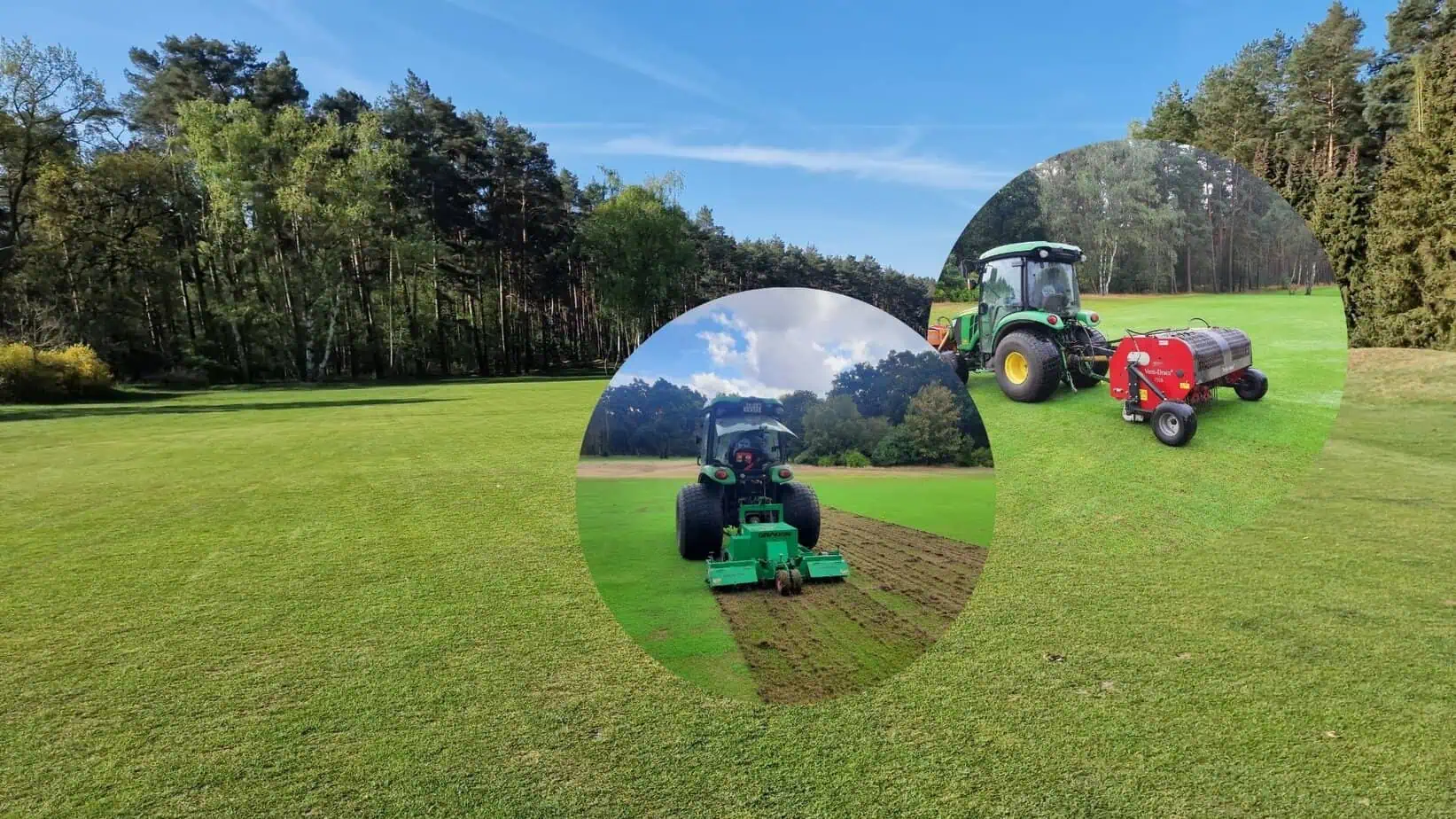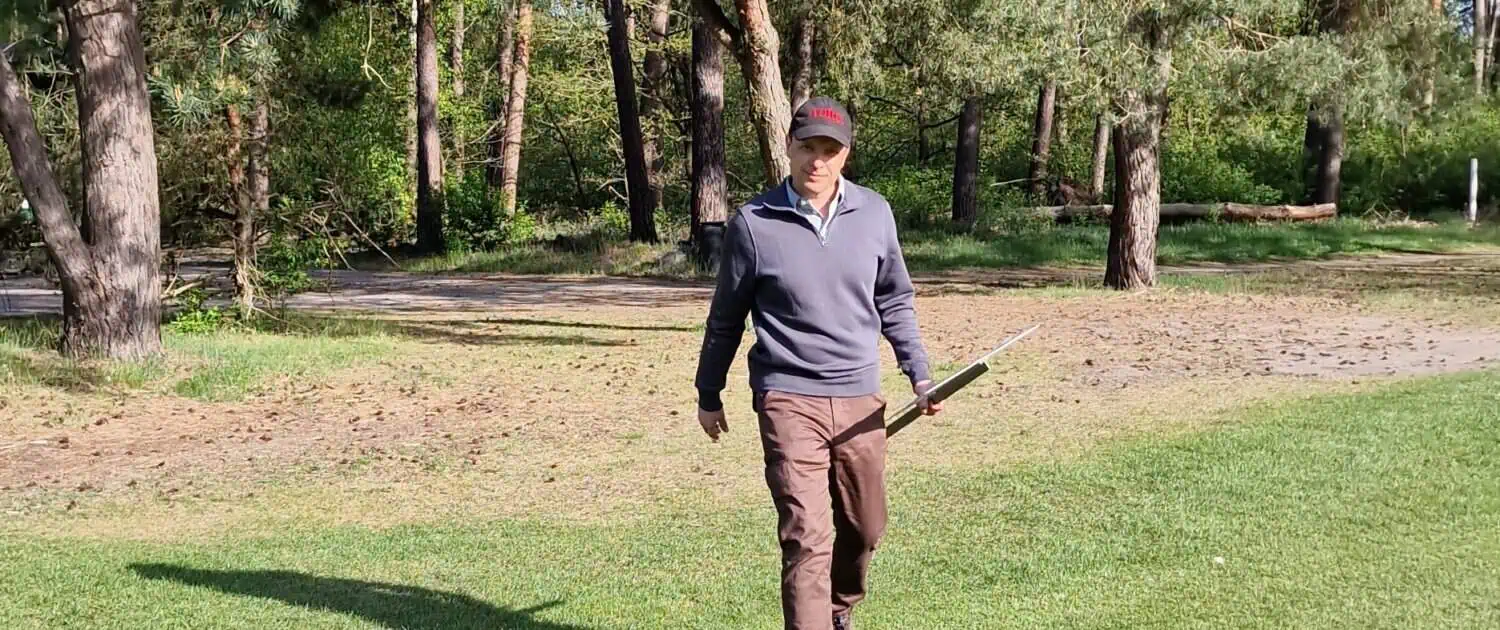What happens if the availability of water for golf courses continues to fall? Be it because the authorities further reduce the amount of groundwater that golf courses are allowed to extract, or because the price of water rises to such an extent that it puts an extreme strain on club budgets. To what extent can the consumption of water be improved through the use of so-called wetting agents and/or mechanical treatments? What are the restrictions on course maintenance if recycled process water or slightly salty water is used for irrigation, as is often the case near the sea?
The Fair-Water II project, which is being carried out in Germany from 2024 to 2026 at the St. Dionys Golf Club in Lower Saxony, aims to provide answers to these questions. Fair-Water II is an international study led by the Norwegian Institute for Bioeconomy (NIBIO). In addition to GC St. Dionys, the golf courses Hirsala in Finland, Romerike in Norway and Kalundberg in Denmark are involved, as well as seven Swedish courses, where the focus is on the research with brackish water.
Test areas with wetting agents and mechanical processing
For Christian Steinhauser, head greenkeeper at GC St. Dionys and member of the executive committee of the German Greenkeeper Association, participation in such scientific projects is essential. He is involved in Project 1, which is concerned with thatch control in the turf, the combination of wetting agents and mechanical measures. Looking at the dry, sandy soil, which is currently suffering from a lack of rainfall in northern Germany at the end of April 2025, he notes: “I’ve never used fairway irrigation as early as this year. The price of the water we get from a well has gone up 18 times.” As head greenkeeper, he needs well-founded answers to the questions of how he can save even more water in the future than he already does.
Subscribe to our newsletter!
News & trends about sustainability in golf
The tests currently being carried out on the ninth hole of the traditional golf course near Hamburg should shed light on this. Here, Steinhauser has marked out nine plots, each measuring twelve by eight meters, whose grasses and soil conditions were analysed in detail last year. “Unfortunately, the felt on the surface ensures that the water is not optimally distributed in the soil,” summarizes Steinhauser.
For this reason, the use of soil wetting agents is now being tested on parts of the areas that were treated last year by scarifying and deep aeration. According to the manufacturers, these ensure that plants and soil are better able to retain moisture. Two brands are being tested and will be applied to the area every month from April to September.
No fairway irrigation
Steinhauser has switched off the fairway irrigation on the test areas of the fairway. The grasses now have to make do with rainwater. Referring to other golf courses, especially in the British Isles, but also in Germany in some cases, the turf expert sums up: “We know that playability is also given with brown color. The question, however, is whether golfers here already accept this.”
Even before the start of Fair-Water II, Steinhauser ensured that the golf course’s water consumption was reduced by reseeding the fairways with Festuca grass. The growth of the grass has also been reduced by using significantly less fertilizer. Now, on the one hand, there is no need for fairway irrigation. On the other hand, the wetting agents and mechanical soil treatment could have a positive effect.
“With a soil structure consisting of 97 percent sand and gravel, this fairway in St. Dionys is very susceptible to drought,” says Steinhauser, analyzing the grass. The turf felt layer of 33 millimetres with a proportion of 29 percent organic matter also makes it clear that turf felt control is necessary here.
As early as April 2025, it becomes clear that the appearance of the golf course will change if it is maintained as envisaged by Fair-Water II: The test area is rather light green, the ground is hard, but the terrain is perfectly suitable as a playing surface. The players’ balls can run longer on the hard ground.
A result of the study is not yet foreseeable. The mechanical processing procedure will be repeated in the fall of 2025 and the use of wetting agents will continue in 2026. Anyone expecting quick results will be disappointed. Fair-Water II is a scientific project that will ultimately deliver concrete results on whether it makes sense to use the wetting agents, which are comparatively expensive. “But who knows, if the water is even more expensive than the wetting agents, it might make sense to spend the money,” reflects Steinhauser.
One thing is already clear to him: the future of golf depends on the availability of water. And that is dwindling.








